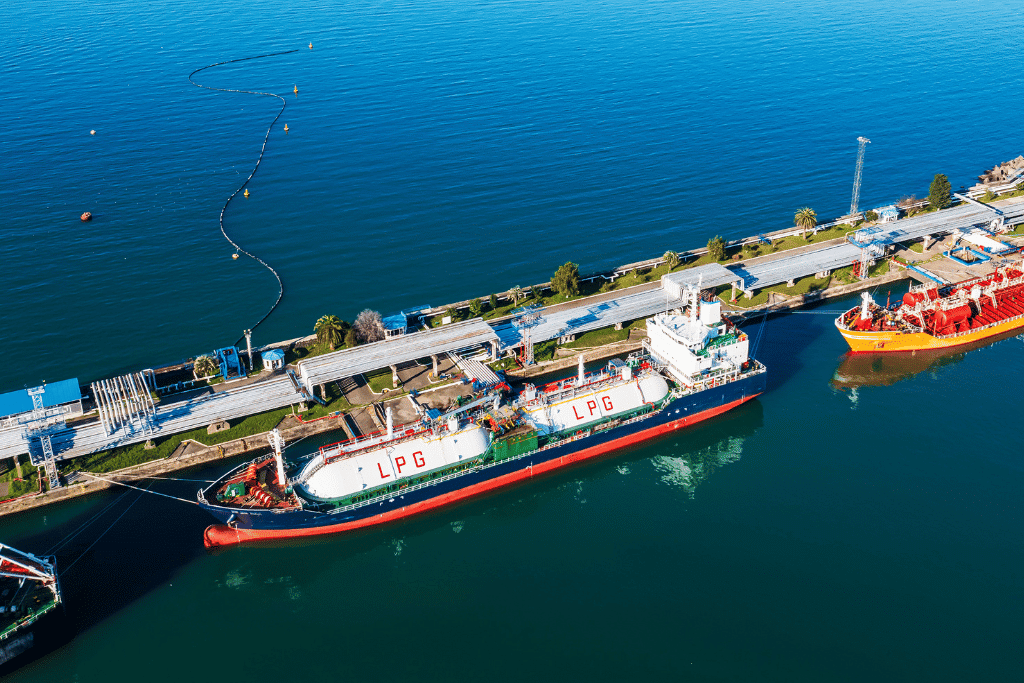The final week of October brought a quiet but steady Rhine barge freight market. Rates across all destinations held largely unchanged, supported by ample water levels, high barge utilization, and few new deals. Operators focused mainly on closing October programs, while charterers completed end-of-month obligations. Despite stable logistics, lingering ARA terminal delays continued to cause re-nominations and scheduling inefficiencies.
1. Freight Rates: Flat and Unmoved Throughout the Week
- 27 October: Activity was slow, with only three new deals registered. Rates slipped slightly (–€0.50 to –€0.65 across major Upper Rhine routes), as water levels rose and operators completed prior commitments.
- 28 October: Spot business improved marginally (seven deals), but rates declined by another €0.50/ton for Frankfurt, Karlsruhe, and Strasbourg, reflecting the combination of high Rhine water levels and steep backwardation in the gasoil market ($17.25/ton difference month-to-month).
- 29 October: Activity rose sharply (14 deals), yet rates eased again by €0.50/ton for most routes, as strong availability and full intakes offset demand increases. Operators cited additional Reformation Day preparations driving temporary trading spikes, but the overall price trend remained soft.
- 30 October: Trading slowed again, with eight deals concluded. Freight levels were mostly unchanged, except for small downward adjustments in Cologne (–€0.25) and Frankfurt (–€0.25). Operators reported that most fleets were booked into early November, leaving few spot opportunities.
- 31 October: The week ended quietly with six deals and rates flat across all destinations. Freighters described a balanced market with little pressure to offer discounts, as barge utilization remained high. Rhine conditions were fully navigable, with Kaub at 333 cm and Maxau at 598 cm, ensuring full loading capability.
Takeaway: Freight rates remained broadly stable to slightly softer through the week, as hydrological and market conditions favored operational calm.
2. Water Levels: Ample Depth Sustains Full Intakes
Throughout the week, water levels remained high enough for full barge loadings:
- Kaub rose from 242 cm on 27 October to 333 cm by 31 October, peaking midweek at 324 cm before leveling off.
- Maxau climbed from 578 cm to 598 cm, ensuring unrestricted navigation across the Upper Rhine.
- Forecasts for early November suggested continued navigability, with no expected limitations to intake capacity.
Takeaway: Hydrological conditions were optimal, removing the draft constraints that had characterized earlier October.
3. Market Activity: Steady but Limited
Trading activity fluctuated between 3 and 14 deals per day, reflecting a steady but unremarkable pace:
- Early in the week, participants finalized carry-over cargoes and adjusted schedules following ARA delays.
- Midweek saw the most active session (14 deals), partly due to pre-holiday bookings and repositioning ahead of Reformation Day in Germany.
- By the end of the week, activity waned as charterers paused ahead of the November trading cycle.
Takeaway: Market participation was consistent but subdued, with most deals operational rather than speculative.
4. Structural Drivers: Backwardation and Logistical Efficiency
Several structural dynamics influenced the week’s tone:
- Steep backwardation in gasoil continued to deter stockpiling and long-term imports, limiting speculative volumes on the Rhine.
- ARA delays persisted at Antwerp and Amsterdam terminals, forcing frequent re-nominations but without material freight rate impact.
- Barge utilization was high, reducing urgency to secure new contracts even as daily spot activity slowed.
Takeaway: Market fundamentals remained neutral, barge occupation rate remained high, but freight rates slightly dropped.
5. Outlook: Calm Continuity Ahead
- Freight rates are expected to stay stable in early November, as barge availability aligns with moderate demand.
- Hydrology will remain favorable, keeping load capacities unrestricted across all Rhine destinations.
- Any volatility will likely stem from refinery maintenance schedules or new ARA congestion rather than from river constraints.
Takeaway: The Rhine market enters November steady, balanced, and unlikely to see major short-term disruptions.
Conclusion: A Stable End to October
The Rhine freight market between 27–31 October closed the month on a calm, stable note. Water levels remained high, barge operations ran smoothly apart from delays at terminals, and rates held firm despite minimal spot demand. Operators filled their schedules efficiently, while charterers awaited new-month programs. The result was a market defined by balance—a fitting close to a month that began turbulent but ended steady.
What’s next?
Are you ready to face your challenges head-on?
We now offer a FREE customized trial to our BargeINSIGHTS tool, an all-in-one platform for liquid bulk barge transport optimization.
With BargeINSIGHTS, you get instant insights into barge freight rates, bunker gas oil prices, water levels, vessel tracking, and barge availability—all in one place. No more time-consuming data collection; everything you need is at your fingertips.
Click here to schedule your demo and get access to BargeINSIGHTS for free!










